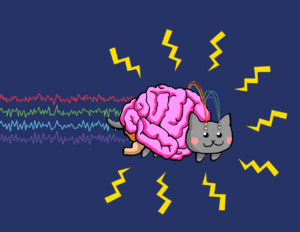WASHINGTON, DC – Following years of testing, the Food & Drug Administration (FDA) has announced its approval of a novel, groundbreaking technology in the world of seizure detection: the seizure cat.

“This particular human-feline interface is a feat of modern biomedical research,” noted by the FDA commissioner Scott Gottlieb. “We thought we had something with the seizure dog. But the seizure cat just blows every other detection method out of the water.”
Indeed, seizure cats, unlike any other seizure detection device on the market, detect seizures in their owners with 100% sensitivity and 100% specificity.
“This is unprecedented,” says Statty Stician, MD, PhD, Medical Officer for the FDA. “We have never seen numbers like this before, ever. I’m not even sure how it’s possible. Cats are just really smart, I guess.”
Patients with epilepsy have been astounded by the accuracy of seizures cats during testing. “This cat was more accurate than the automatic seizure detection of my implanted device,” said Eppy Lepsy, a 43-year-old patient with intractable epilepsy. “He was even able to detect my most brief, subtle seizures, just while rubbing against my leg and purring. It’s uncanny!”
The process of training the cats to notify EMS, however, has been more difficult. There were several trials to train the cats to press a button that dialed 911 after detecting a seizure. The cats were able to identify the seizure, and knew to press the button, but it appears that they “simply could not be bothered.”
“We tried everything, from special food treats and cat nip,” said Stician, “but there was nothing that could entice the cats to actually do anything about the seizures.”
Further testing was performed to train the cats to turn patients onto their sides during a generalized seizure. The cats were able to perform the physical act of nudging people into a side-lying position while on the ground, but they never actually did anything when presented with a seizing patient.
For now, the seizure cat has received interim approval to yawn, then trot away, after detecting seizures in epilepsy patients. The findings of the research trials with the seizure cats, including supplementary videos showing the cats snacking, napping and staring at the ceiling during patients’ seizures, have been published in the Journal of Valiant Attempts to Make Cats Care (JVAMCC).